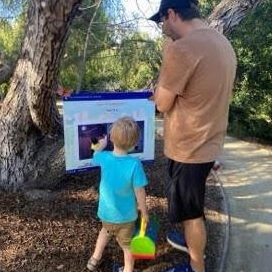In the 1970s, while a student of psychology and physiology at Oxford University, Dr Susan Blackmore experienced a profound “out-of-body experience.” Afterwards, she sought a deeper understanding and completed a Doctor of Philosophy in parapsychology, analyzing reported incidents of clairvoyance, telepathy, astral travelling and so forth – all a part of what has become a lifelong engagement with the ‘mystery of consciousness.’ Through her studies, Blackmore formed a view that personal experiences of the paranormal were a byproduct of abnormal brain functioning. Freshly bestowed with a doctorate in ‘psychic powers,’ she was worried “there was no way [she] was going to get a normal job…or any job.” However, she broadened her research interests to take in evolutionary theory, mimetics, and studies in consciousness to become a freelance writer and lecturer, tackling subjects that would only become the focus of scientific enquiry in the late 1990s.
You may not know it, but Australia is facing an extinction crisis. With the worst rate of mammalian extinction in the world, over 1,700 species of animals and plants are currently at risk of becoming extinct in Australia. The future of biodiversity conservation relies on multiple factors, including removing native animals from the dangers of introduced predators, changing the culture of clearing land, and having support of the government, conservationists, and society as a whole. These changes would help populations to recover, however when the gene pool of a species has bottlenecked so much, even if the population size increases, their genetic health will remain poor. To avoid the current health problems such as all koalas having chlamydia and Tasmanian devils having infectious facial tumours, genetic rescue is potentially the solution. With Dr Weeks and his colleagues leading the way, endangered and threatened Australian flora and fauna will hopefully flourish once again.
Our warmest congratulations to our partners Decibel Architecture for taking out a silver medal at the London Design Awards for their conceptual work on “Magic” as a “for-purpose” project! “Importantly, this project is not a development play, but a community-driven, purpose project. The plans predict a $30million profit from apartment sales which will be used to upgrade RSV’s heritage-listed home on the neighbouring site, develop a new science engagement centre and cafe, and create a perpetual endowment fund, enabling the RSV’s purpose, projects and awards programs to be supercharged for the next 160 years.”
“The residential tower will also double as a science engagement precinct and will demonstrate ingenuity, striving for PassivHaus standard and cutting-edge sustainable technologies.”
The London Design Awards are convened to “accelerate transformation, celebrate courage and grow demand for design.”
RSV President David Zerman emphasises the Medal is not just about discovery and innovation, but also about fostering and supporting a thriving research community and workforce to achieve collective impact. “Some of this is demonstrated through a scholar’s personal output of journal articles and the related citations, or through patents and commercialisation, but it is also the research ecosystem that a leader supports through mentorship, collaboration and public engagement. We look very favourably on research leaders who bring effective teams together, and who actively promote younger scientists in particular, either through direct supervision, co-authorship of major papers, or simply creating opportunities for meaningful, purposeful work in an intensely competitive job market.”
On 8 October, a group of about 16 people, including the Society’s Councillors, the senior team from Grocon and the leaders of Decibel Architecture, convened in the historic Burke & Wills Room to sign a Heads of Agreement, setting out the scope of our collaboration for our proposed Magic Project. In this place of deep significance to Victoria’s rich history of scientific endeavour, we took a major step on the path to realising a future vision for Victoria’s scientific capabilities. In exploring the boundaries of what we can achieve on our small, CBD site, we embark on a new expedition; to be well planned, and with the appropriate expertise in the mix to lead us through as a community of members and supporters. This is substantially new work in the development sector, and will require a translational research approach – the opportunities for involvement by some of Victoria’s outstanding scholars in the broad field of sustainable urban development are plain to see.






